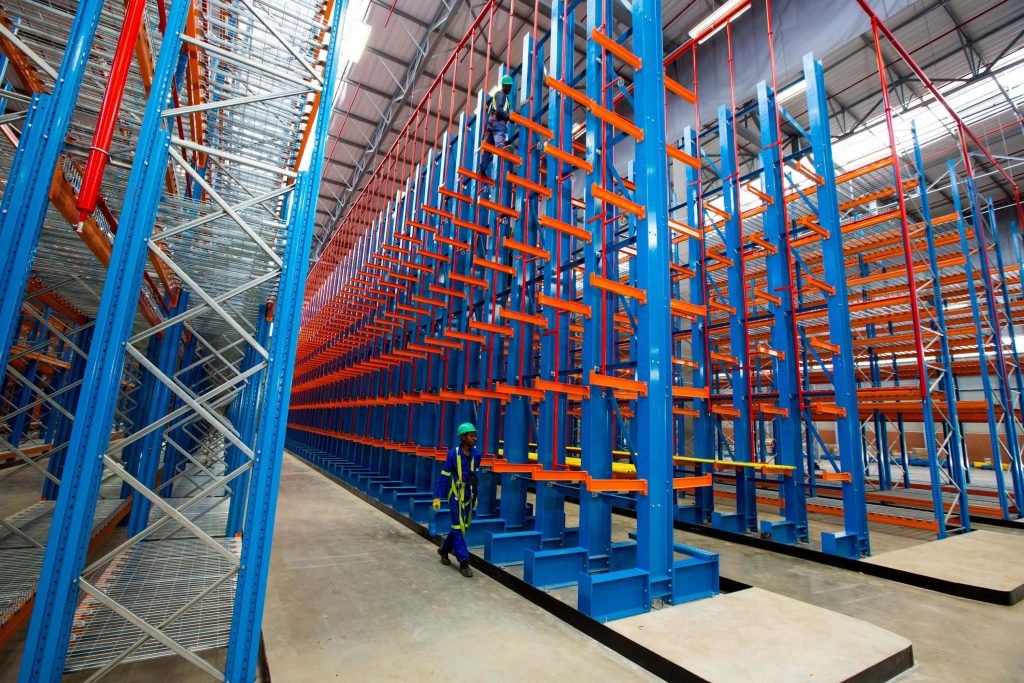There’s no shortage of options concerning racking and shelving systems for storage facilities or distribution centres. However, not all inventory has an obvious solution. Items like timber, pipes, or other non-palletised goods can present storage challenges due to their irregular shapes or lengths. You might be a warehouse manager who is seeking multifaceted, inexpensive systems that can maintain accessibility for optimal product picking.
Cantilever vs. selective racking systems are likely the top contenders for bulk storage needs. But how do they compare? This article highlights the differences, applications, and benefits of cantilever racking vs. selective racking to help you determine the best selection for your warehouse setup.
Cantilever vs. Selective Racking Overview
Recognising what each system offers and how they differ should come before diving into specifics. Let’s examine cantilever and selective racking in detail.
What Is Cantilever Pallet Racking?
Cantilever racking is a resilient storage system for handling long, bulky, or irregularly shaped items. Its defining feature is the absence of vertical obstructions that allow items to extend freely over its arms. Its openness makes it great for storing items like lumber, steel pipes, and furniture that don’t fit into standard pallets. As an added benefit, the adjustability of cantilever racking from Krost Shelving makes it the right solution to grow with your organisation.
Cantilever Racking Differences
What sets cantilever racking apart from other systems is its convertibility. Cantilever systems have horizontal arms extending from a vertical column that provides unobstructed storage. Their layout simplifies loading and retrieving oversized or awkwardly shaped goods by enabling easy entrance.
The key features of cantilever racking include an open structure optimal for non-standard or lengthy items. These systems also have customisable arms which are adjustable enough to suit varying load sizes. Lastly, they are sturdy and built to withstand heavy-duty use in industrial conditions.
Best Cantilever Racking Applications
Cantilever racking is most useful in industries that handle unconventional inventory like construction where timber, drywall, and metal beams can be stored. They can also hold up well in manufacturing settings where it is great for pipes, steel bars, and other raw materials. Retail is another fitting sector because it is suitable for large, heavy items such as furniture and rolled carpets.
What Is Selective Storage Racking?
Krost Shelving’s selective storage racking is resourceful for light, medium, or heavy-duty storage. This economical storage option combines versatile selective racking with a more manual system to optimize horizontal and vertical warehouse space. This is done by installing manual elements at the bottom of a selective pallet structure. Selective storage systems can compactly store multiple non-palletised warehouse goods and provide free entry to every unit load.
Selective Racking Differences
Like cantilever racking, selective storage racking stands out for its adaptability. It is an orderly system that can accommodate unit loads of different sizes and weights. It also has a lower initial cost because of its simple assembly and basic composition.
Selective racking’s key features include its accessibility. It provides immediate access to every pallet for efficient stock management. It also facilitates productive item control by reserving portions of storage space for individual unit loads. This can enhance product referencing and collection. Finally, it is compatible with most forklifts and material-handling equipment.
Best Selective Storage Applications
Selective racking is a go-to for industries that demand well-organised inventory management, such as retail for managing seasonal inventory or fast-moving consumer goods, logistics to store an assortment of goods of varying loads in warehouses, and food and beverage to guarantee reachability to perishable goods with high turnover rates.
Cantilever vs. Selective Racking: Which Perfectly Suits Your Warehouse Setup?
Choosing between cantilever and selective racking depends on your warehouse’s specific needs and the type of inventory you handle. These are a few criteria to take note of:
Inventory Type
Cantilever racking is the clear winner if you store long, irregularly shaped goods. Conversely, selective racking provides unrestricted entry for varied items.
Space Utilisation
Cantilever racking maximises vertical space for oversized items, while selective racking combines systems to take advantage of horizontal and vertical storage areas.
Cost Consciousness
Selective racking is relatively low-cost compared to more intricate storage systems, whereas cantilever systems may call for higher upfront costs due to their specialized design.
Industry Needs
Matching the racking system to your industry requirements may be a great place to start. Construction or manufacturing businesses may benefit more from cantilever racking, but logistics and retail operations lean toward selective systems.
Have any further questions about our offerings? Find the answers on the Krost Shelving FAQs page.
Conclusion
Cantilever and selective racking systems offer distinct advantages therefore, they are suitable for different bulk storage needs. You’ll get closer to the right solution by knowing what bulk storage is and studying the features and applications of each system as a warehouse manager seeking to improve the operational performance of your warehouse.
Krost Shelving and Racking provides select racking solutions that suit your unique storage challenges. We offer the versatility of cantilever racking, the consistency of selective systems, and much more; our experts can assist you in your selection process. Reach out to a member of our team today to optimise your storage space!
